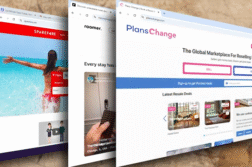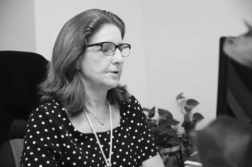DENVER, Colo. (Ivanhoe Newswire) — An accident, an illness, a mistake can happen and change a person’s life forever. In the United States alone, five point four million people are living paralyzed … dealing day-to-day, without the use of their legs. Today in our smart living report, we’ll show you how one woman’s hope and perseverance, combined with ground breaking technology is helping people get out of their wheelchair and walk again. Bridging bionics
Getting up and moving is no small feat for Amanda Boxtel, founder and executive director of Bridging Bionics and Mackenzie Langley.
In a split second, both of these women lost the use of their legs.
“When I woke up, I was really scared and almost in a state of shock,” Langley said.
A car accident crushed Langley’s spine … for Boxtel, it was an accident on the slopes.
“Yet I never gave up the hope that I would walk again,” Boxtel said.
Eighteen years later, Boxtel’s dream came true.
“Walking again was in a robotic piece of equipment and I still see that I’m walking,” she told Ivanhoe.
Boxtel became the first woman in the world to test a protype of the exoskeleton … a bionic suit that enables those confined to a wheelchair or unable to stand on their own to walk again.
“For me to stand up and to feel my five-foot seven frame was unbelievable,” she described.
But at a price tag of 175 thousand dollars each, this type of therapy is rarely covered or limited by most health insurance. Amanda raised the money, bought her own bionic exoskeleton and started bridging bionics not inside a hospital or clinic but here, inside a normal workout gym in Aspen, Colorado.
“I was addicted from the first moment I stood up,” Langley said.
Four physical therapists and one trainer work with people like john, who today is walking with the help of an investigational keeogo dermoskelton.
They also use pool therapy. Whole body vibration technology. Amanda says by getting people up out of their chair, they’re reducing secondary complications associated with paralysis such as pressure wounds, muscle spasms, poor circulation and u-t-i’s.
“When you sit you begin to die. We are made for mobility,” Boxtel said.
With the help of the exoskeleton, a year after Langley’s accident…
“I was able to walk across stage to get my high school diploma,” Langley said.
Bridging bionics allows anyone who needs it the opportunity to get up and get moving … for free or next to nothing. More than 100 clients, plus more than 125 caregivers, have benefited from bridging bionics so far, helping people not with only spinal cord injuries, but cerebral palsy, multiple sclerosis and Parkinson’s. Their youngest patient is three years old. Their oldest is 80. You can find out more about this at bridgingbionics.org.
Sources: bridgingbionics.org
FOR MORE INFORMATION ON THIS REPORT, PLEASE CONTACT:
Amanda Boxtel
Contributor(s) to this news report include: Marsha Lewis, Producer; Rusty Reed, Videographer and Roque Correa, Editor.
To receive a free weekly email on Smart Living from Ivanhoe, sign up at: http://www.ivanhoe.com/ftk



